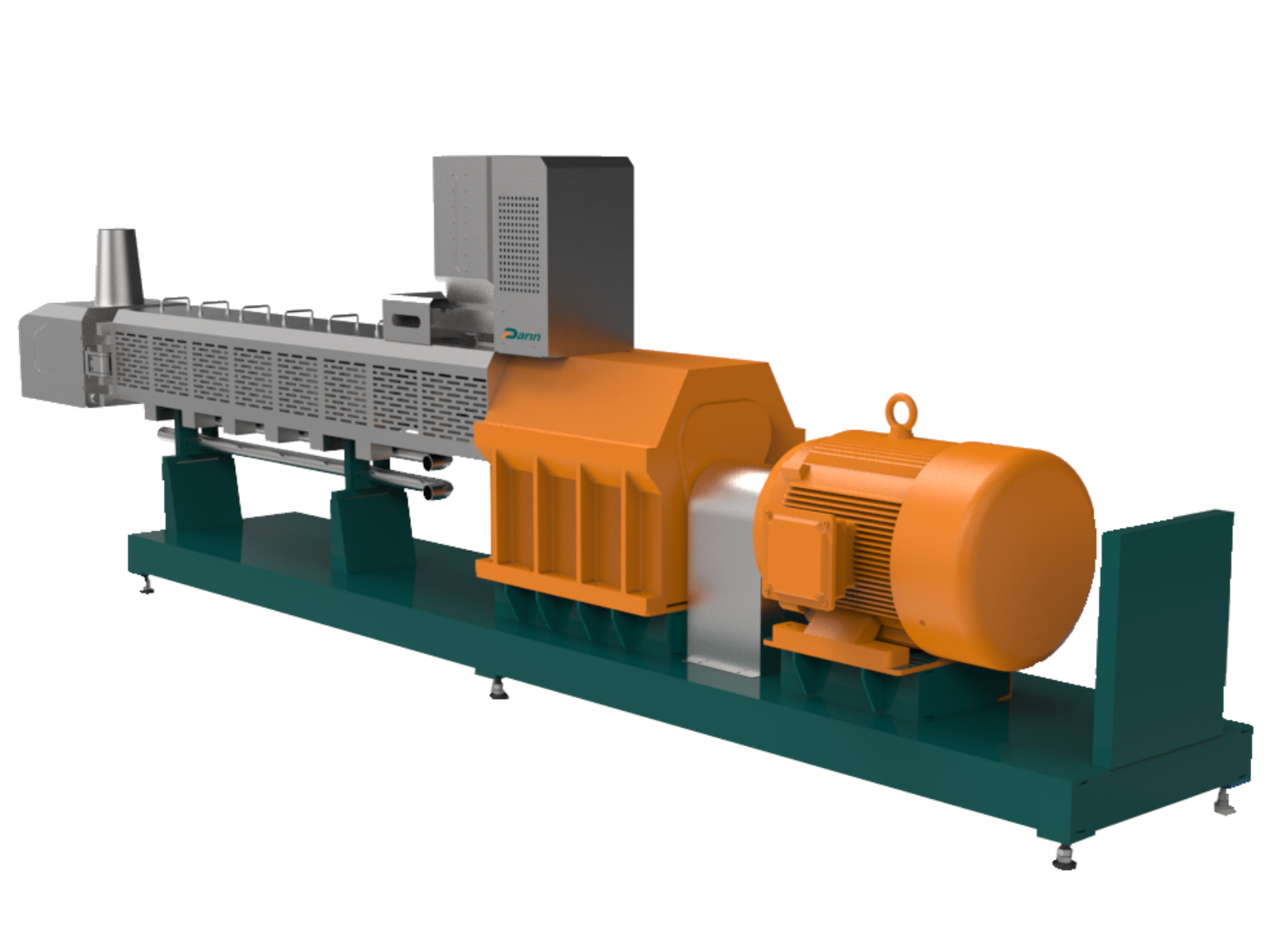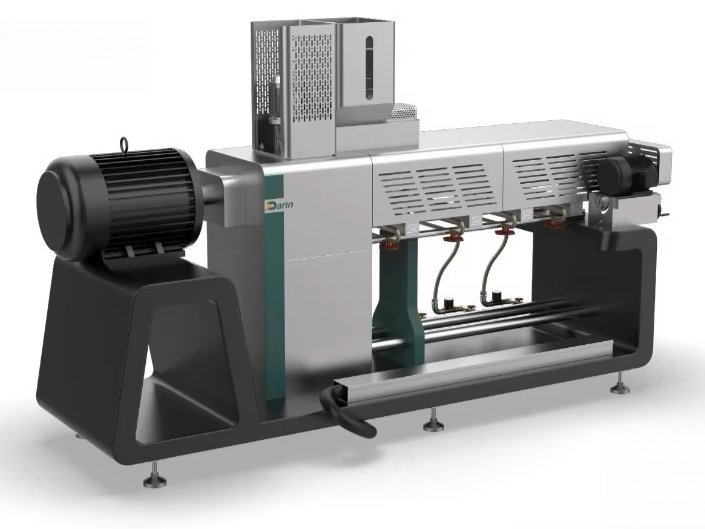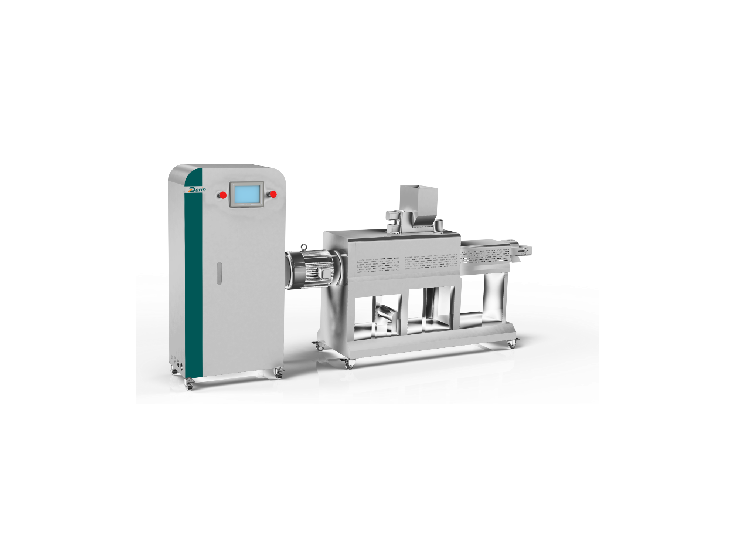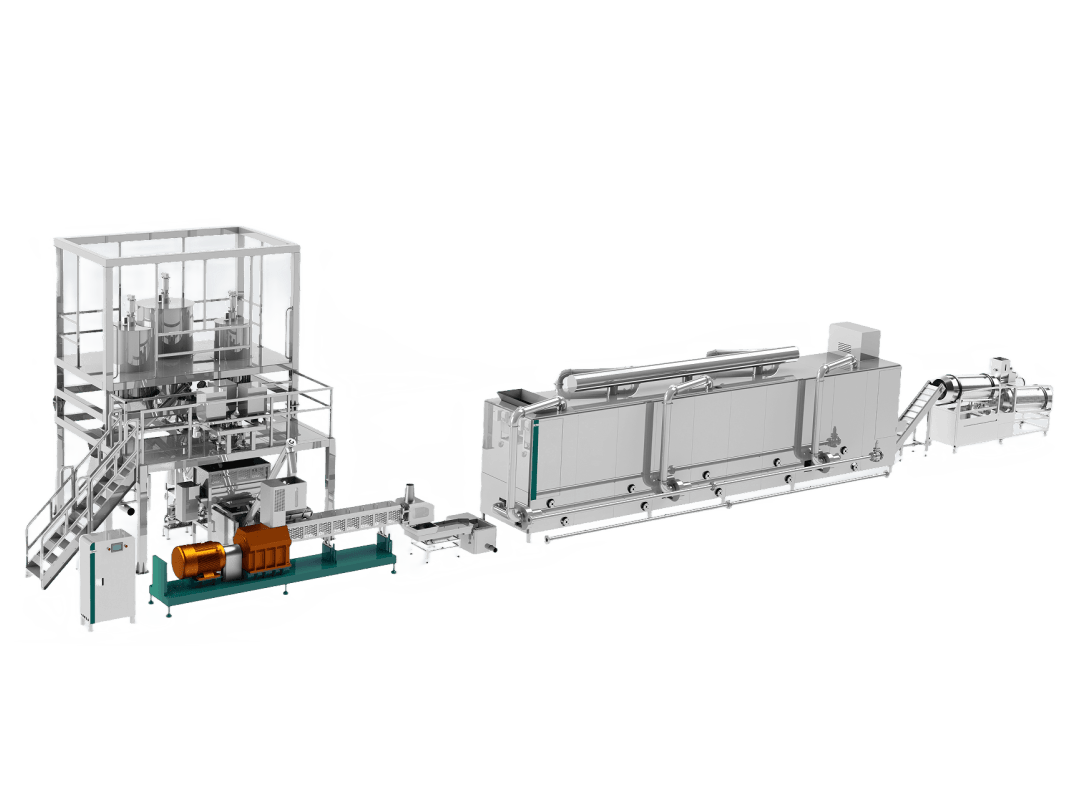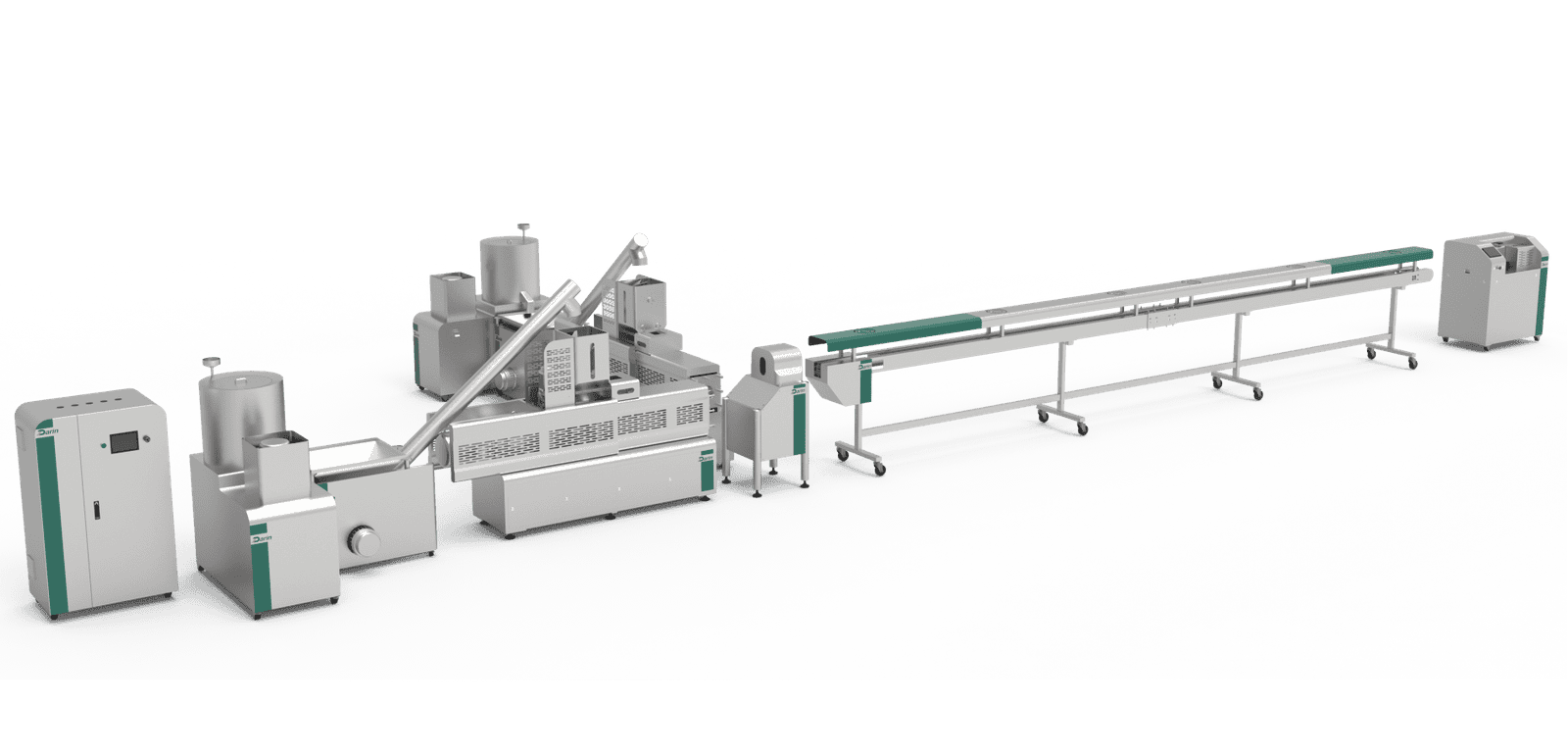
Modern pet owners are more conscious than ever about what they feed their pets, and the quality of pet food has become a top concern globally. A common pain point for consumers and manufacturers alike is understanding what goes into pet food—and why. Poor ingredient choices can lead to health issues, low digestibility, and decreased product appeal. For pet food manufacturers, using low-quality ingredients can harm brand reputation and sales. To overcome these challenges, it's essential to understand the major ingredient categories used in pet food formulation and how each contributes to a pet’s overall nutrition.
The main types of ingredients used in pet food include animal proteins (like chicken, beef, and fish), plant-based proteins (like soy and pea protein), carbohydrates (such as rice, corn, and barley), fats and oils (like chicken fat or fish oil), fiber sources (including beet pulp and cellulose), and vitamin-mineral premixes. These components are carefully selected to ensure pets receive a balanced diet tailored to their species, age, and health needs.
Understanding the fundamental categories of pet food ingredients not only helps consumers make informed decisions but also enables manufacturers to develop nutritionally complete and competitive products. Let's explore each ingredient category in detail to uncover how they shape the quality, functionality, and health outcomes of pet food.
\
Meat by-products are unsafe and provide no nutritional value to pets.False
Meat by-products approved by regulatory bodies can be safe and nutritious, providing essential proteins, fats, and minerals.
Animal-Derived Ingredients in Pet Food
Animal-based ingredients are the cornerstone of pet nutrition, especially for carnivorous species like cats and omnivorous dogs. These ingredients serve as the primary source of protein and fat.
| Category | Examples | Nutritional Role | Typical Use in Pet Food |
|---|---|---|---|
| Fresh meats | Chicken, beef, lamb, fish | High-quality protein, fat, amino acids | Premium kibble, wet food |
| Meat meals | Chicken meal, lamb meal | Concentrated protein, lower moisture | Dry kibble |
| Meat by-products | Organ meats, tripe, bone | Vitamins (A, B12), iron, calcium | Economy kibble, wet food |
| Fish derivatives | Salmon, tuna, fish meal | Omega-3 fatty acids, protein | Skin/coat health diets |
| Animal fats | Poultry fat, fish oil | Energy, flavor enhancement, omega fatty acids | All types of food |
Animal proteins are often rendered and concentrated into "meals" for dry food applications, and fresh meats are typically used in wet formulations or freeze-dried raw diets. High-end products may list fresh meat as the first ingredient, a selling point in marketing.

Plant-Based Ingredients in Pet Food
Although dogs are omnivores and cats obligate carnivores, plant-based components are frequently used to complement protein and energy intake or reduce formula costs.
| Ingredient Type | Examples | Functionality in Pet Food | Protein Content (%) |
|---|---|---|---|
| Plant proteins | Soy, pea, potato protein | Supplement amino acids, reduce costs | 45–90 |
| Whole grains | Brown rice, oats, barley | Provide carbs, fiber, B-vitamins | 7–14 |
| Vegetables | Carrots, peas, spinach | Micronutrients, fiber, flavor | 1–5 |
| Legumes | Lentils, chickpeas | High in protein and fiber | 20–25 |
High-quality plant-based proteins are now common in grain-free diets. However, formulation must ensure amino acid completeness, especially for feline products where taurine is vital.
Carbohydrates: Energy and Digestibility
Carbohydrates provide readily available energy and structure for kibble. They also impact glycemic response, stool quality, and food texture.
| Carbohydrate Source | Digestibility (%) | Benefits |
|---|---|---|
| Rice | 95 | Highly digestible, low allergenicity |
| Corn | 85 | Energy-dense, cost-effective |
| Sweet potato | 90 | Rich in fiber, antioxidants |
| Tapioca | 80 | Grain-free, easy to digest |
| Barley | 87 | Soluble fiber content, low glycemic index |
While some pet owners avoid grains due to perceived allergies, most dogs and cats tolerate cooked cereals well. Still, grain-free and low-carb options cater to niche markets.
Fats and Oils: Energy, Palatability, and Coat Health
Fats are not only calorically dense but also key to food flavor and palatability.
| Fat Type | Examples | Key Fatty Acids | Primary Role |
|---|---|---|---|
| Animal fats | Chicken fat, beef tallow | Linoleic acid, palmitic acid | Flavor, energy, coat health |
| Marine oils | Fish oil, krill oil | DHA, EPA (omega-3s) | Anti-inflammatory, brain/skin health |
| Vegetable oils | Sunflower, flaxseed | Omega-6, ALA | Energy, skin and immune support |
Proper balance between omega-6 and omega-3 fatty acids is crucial. Excessive imbalance may lead to inflammation or skin issues.
Fiber and Functional Ingredients
Fiber plays a vital role in digestion, stool quality, weight control, and gut microbiome balance.
| Source | Type | Role in Digestion |
|---|---|---|
| Beet pulp | Insoluble/soluble | Improves stool quality, prebiotic effect |
| Cellulose | Insoluble | Adds bulk, promotes satiety |
| Chicory root | Soluble (inulin) | Prebiotic, supports healthy gut flora |
| Pumpkin | Soluble/insoluble | Soothes digestion, rich in beta-carotene |
Functional fibers also help manage conditions like diabetes, obesity, or diarrhea. Inclusion levels vary depending on life stage and dietary goal.
Vitamins and Minerals: Essential Micronutrients
Vitamin-mineral premixes ensure nutritional adequacy based on standards such as AAFCO (USA), FEDIAF (Europe), or NRC (global research body). These micronutrients cannot be left to chance.
| Nutrient Type | Common Sources | Function |
|---|---|---|
| Vitamins A, D, E | Synthetic additives, liver, fish oil | Vision, bone health, antioxidant |
| B-Complex | Yeast, whole grains, synthetic blends | Metabolism, nerve function |
| Calcium, Phosphorus | Bone meal, dicalcium phosphate | Bone and dental development |
| Zinc, Copper | Sulfates, chelates | Skin, coat, enzyme function |
Without proper supplementation, even meat-rich diets can be nutritionally incomplete. Premixes are thus a non-negotiable component of all commercial pet foods.
Additives: Flavor, Preservation, and Functional Claims
These ingredients improve shelf life, palatability, and marketing appeal but must be used responsibly.
| Additive Type | Examples | Purpose |
|---|---|---|
| Preservatives | Mixed tocopherols, rosemary | Prevent rancidity and spoilage |
| Flavor enhancers | Animal digest, liver coating | Improve taste and acceptance |
| Probiotics | Lactobacillus, Enterococcus | Support gut health and immunity |
| Antioxidants | Vitamin E, selenium | Protect cells from oxidative stress |
\
Artificial preservatives are always harmful in pet food.False
When used within regulatory limits, synthetic preservatives like BHA and BHT are generally considered safe and effective.
Case Study: Ingredient Formulation Comparison in Premium vs. Economy Pet Food
| Ingredient | Premium Formula | Economy Formula |
|---|---|---|
| Protein Source | Fresh chicken + salmon meal | Chicken by-product meal |
| Carbohydrate Source | Brown rice + sweet potato | Corn gluten meal + wheat |
| Fat Source | Chicken fat + fish oil (DHA & EPA) | Poultry fat only |
| Fiber | Beet pulp + pumpkin | Soy hulls |
| Supplementation | Chelated minerals + probiotics | Standard vitamin-mineral premix |
| Price | \$3.20/kg | \$0.95/kg |
This table illustrates how ingredient selection directly affects cost, quality, digestibility, and health outcomes.
Conclusion: Ingredients Define Pet Food Quality
Understanding the main types of ingredients used in pet food—animal proteins, plant-based proteins, carbohydrates, fats, fibers, vitamins, and functional additives—enables pet owners and manufacturers to prioritize nutrition, safety, and market appeal. While ingredient sourcing and balancing remain complex, a well-designed formula tailored to the pet’s life stage and health profile is key to performance and longevity.
Contact Us for Ingredient-Smart Machinery Solutions
Whether you’re a brand entering the pet food market or looking to optimize formulations with new ingredients, Darin Machinery offers world-class pet food processing equipment tailored to various formulations and ingredient complexities. Contact us today to learn more about how our extruders, mixers, dryers, and coating machines can support your ingredient strategy and boost your product’s competitive edge.
FAQ
Q1: What are the primary protein sources in pet food?
A1: Pet food commonly includes animal-based proteins like chicken, beef, lamb, fish, and turkey. These proteins provide essential amino acids for muscle development and immune health. Some formulas also incorporate plant-based proteins such as soy, peas, or lentils, especially in vegetarian or hypoallergenic diets.
Q2: Why are grains and carbohydrates added to pet food?
A2: Grains like corn, rice, barley, and oats are energy sources and help in digestibility. While some pets thrive on grain-free diets, many benefit from whole grains that provide fiber, vitamins, and minerals. Carbohydrates are also used as binders in kibble manufacturing.
Q3: What types of fats are used in pet food and why?
A3: Fats such as chicken fat, fish oil, and flaxseed oil are common in pet food. These provide essential fatty acids like omega-3 and omega-6, which support skin health, brain development, and a shiny coat. They also enhance flavor and provide concentrated energy.
Q4: What vitamins and minerals are essential in pet food?
A4: Pet food includes essential micronutrients like vitamin A, D, E, calcium, phosphorus, zinc, and selenium. These support vital functions such as bone development, vision, immunity, and reproduction. Balanced formulations meet AAFCO or FEDIAF nutrient standards.
Q5: Are there any additives or supplements included in pet food?
A5: Yes, pet food often contains supplements like probiotics, glucosamine, and taurine. Probiotics aid digestion, glucosamine supports joint health, and taurine is vital for cats' heart and vision health. Preservatives like mixed tocopherols may also be added to enhance shelf life.
References
- Pet Food Institute – https://www.petfoodinstitute.org/
- FDA Pet Food Labeling Guide – https://www.fda.gov/animal-veterinary/resources-you/fda-regulation-pet-food
- AAFCO Official Website – https://www.aafco.org/
- FEDIAF Nutritional Guidelines – https://fediaf.org/self-regulation/nutrition.html
- American Kennel Club – https://www.akc.org/expert-advice/nutrition/dog-food-ingredients/
- Veterinary Partner – https://veterinarypartner.vin.com/
- PetMD Ingredient Glossary – https://www.petmd.com/dog/nutrition/evr_dg_common_ingredients_found_in_pet_food
- ASPCA Pet Nutrition – https://www.aspca.org/pet-care/general-pet-care/pet-nutrition-tips
- National Research Council Pet Nutrition – https://www.nap.edu/catalog/10668/nutrient-requirements-of-dogs-and-cats
- WebMD Pets – https://pets.webmd.com/dogs/guide/dog-food-nutrition


